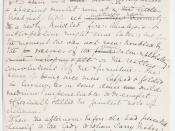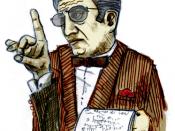Law and Desire in "The House of Mirth"
In Edith Wharton's novel, The House of Mirth, the main protagonist, Lily Bart oscillates between dreams of marriage and equally strong desires for independence and freedom. Despite her training on the social codes of conduct and etiquette, which was ingrained into her daily existence by her mother, Lily exhibits frequent moments of recklessness that threaten her opportunities in the marriage market. Why does a well-trained, economically motivated, twenty-nine year old virgin risk her chances for a financial and social safe-haven? With the aid of Jacques Lacan's theories in the formation of subjectivity in the psyche, an analysis of Lily Bart's history and background should help answer this question.
In Lacan's analysis, there are three orders in the psyche that are crucial and equally important to the formation of subjectivity, they are the "Imaginary," the "Symbolic," and the "Real" (1281). In order to understand why Lily Bart continually sabotages her efforts to achieve what she frequently refers to as an escape from "the dinginess of her present life," (34) an examination of the "Imaginary" order must first be made.
According to Lacan:
The human self . . . comes into being through a fundamentally aesthetic recognition. Through an external medium (a mirror) the child's fragmented body is made whole:
the newly fashioned specular 'I' precedes the social 'I.' The Imaginary originates
in the human being's fascination with form (1281).
In the case of Lily Bart, the form that she is most fascinated with is her own. Lily's constant mirror gazing initiates the process of constructing a center for herself or her ego. As Terry Eagleton explains, "This self, as the mirror situation suggests, is essentially narcissistic: we arrive at a sense of an 'I' by finding that 'I' reflected back to...


